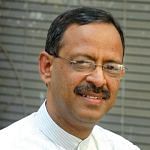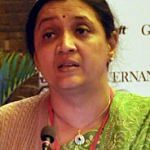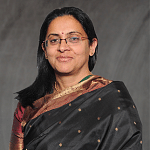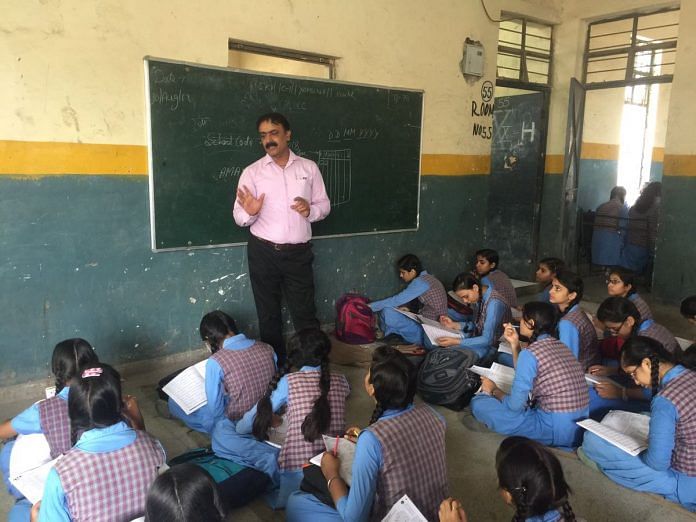Poor learning levels at school and the absence of adequately qualified and trained teachers are clearly identified as the biggest of concerns in the Indian schooling system. That the issue still needs to be addressed is evident — the Lok Sabha this July passed an amendment to the RTE Act to extend the deadline for ensuring trained teachers at every school from 2016 to 2019.
What are the measures needed to ensure that every Indian school has trained teachers by 2019? We ask experts.
A broken teacher education sector is putting over 370 million children at risk

Anil Swarup, Secretary, Department of School Education, Ministry of Human Resources
India has made tremendous progress in getting its children into schools. But learning outcomes has left a lot to be desired.
Teacher competency and teacher effort is pivotal for learning outcomes. Yet, our teacher education sector remains mired in crisis. Over 85% of teachers fail the post-qualification competency test – the central teacher eligibility test (C-TET).
Moreover, teacher education institutions (TEI) inspections have found institutions with only a foundation stone for infrastructure, but with a 99% pass rate. In some places, the faculty is paid nearly one-eighth of the prescribed norms. In 2012, the Supreme Court set up the Justice Verma Commission, which listed a comprehensive list of reform proposals.
The National Council for Teacher Education (NCTE) has begun to implement these reforms in both letter and spirit. Two flagship initiatives: “TeachR” for prospective teachers, and the “National Teacher Platform” (NTP) for teachers in schools have enormous promise.
TeachR is India’s first framework for accrediting and ranking TEI. It seeks to shift the focus away from regulatory compliance towards learning outcomes and the inputs needed. This includes a 4-pillar test of physical assets, academic assets, teaching quality (audio-video recordings of sample classes) and learning outcomes (proctored tests of students). NTP, on the other hand, aims to arm teachers with both curated and user-rated resources.
But a section of private managements who run TEI’s are opposing our reforms. Seventy eight cases have been filed against TeachR in 13 high courts in the last month. There is an oversupply of TEIs in many states, witnessed by large-scale seat vacancies. And unrealistic fee caps set by states mean that TEIs cannot rely on fee to meet regulatory requirements for faculty remuneration. Thus, some TEIs stand to lose a great deal from NCTE’s efforts to check for learning outcomes and regulatory compliance.
The mission is to make teachers the driving force behind a transformative improvement in learning outcomes for all 370 million of our children. Nation’s future depend on it.
#
Establish teacher education programmes in existing university-based institutes of liberal arts and sciences
 Poonam Batra, Professor of Education, Central Institute of Education, University of Delhi
Poonam Batra, Professor of Education, Central Institute of Education, University of Delhi
When the RTE Act was implemented in 2010, there was already a huge deficit of professionally qualified teachers in the country. The massive demand for teachers compelled several states to hire unqualified candidates, adding to the large number of ‘para teachers’ existing in the state school system.
The bulk of those who qualify to be teachers, observed the Justice Verma Commission (JVC) on Teacher Education (2012), are trained through a poorly regulated system of sub-standard private ‘teaching shops’ that fail to address the pedagogic needs of diverse classrooms. Several states continue to face acute teacher shortage because of the poor institutional capacity to train teachers.
The challenge of training 11 lakh teachers needs to be seen in the light of the JVC recommendation, now law under the NCTE regulations, 2014: ‘As a matter of policy, the first professional degree/diploma in teacher education should be offered only in face-to-face mode.’ State provision for teachers to acquire qualification through the distance mode, poorly operationalised since 2010, now stands contrary to law.
The government needs to set short-term, medium-term and long-term strategies to address the increasing gap of qualified teachers. To begin with, fresh graduates with requisite qualifications should be recruited; and only those teachers selected through a rigorous process should be given time to complete professional qualification.
In parallel, states must follow the Action Plan based on JVC recommendations and the Supreme Court directive of 2013. This includes establishing teacher education programmes in existing university-based institutes of liberal arts and sciences.
This is probably the only economically viable way for states to invest in teacher education, which is also a JVC recommendation, especially since the current government is determined to shut down sub-standard ‘teaching shops’ that have led to the current crisis of qualified teachers.
#
Missing focus on teachers in the era of global educational reforms in India
 Manisha Priyam, Associate Professor, National University for Educational Planning and Administration
Manisha Priyam, Associate Professor, National University for Educational Planning and Administration
Since the Jomtien Conference on “Education For All” in 1990, educational policies in India have been a site for donor collaborations and extensive reforms iterating global norms.
There is an explosion of policy literature that advocates testing student learning achievements like PISA, and the advocacy of ‘what works’ in ‘high performing education systems’ globally, teacher audit and accountability.
India’s adoption of ‘Right to Education’ (2009) as a statutory mandate reinforces this policy vigour. Yet, one of the most critical disjunctures of this policy discourse is that in all this emphasis on learning, it omits ‘teaching’ and ‘teachers’. That good quality teachers are critical to educational change is conveniently ignored. A related outcome is underfunding of programmes for teacher preparation, and even adoption of policies for hiring teachers with lower or poor qualifications for teaching.
The Shikshamitra para-teachers program in Uttar Pradesh are an example of this. While there is a shortage of nearly one million teachers for Indian schools, the para-teachers from UP (and elsewhere) have been unable to pass the mandated entry test for appointment as professional teachers.
The parliament had to amend the RTE Act in 2017, giving teachers more time until March 2019 to pass the mandatory tests. Appointment of contract teachers with poor qualification is a politically directed policy move that downgrades the teaching profession.
An alternative is to argue and establish teaching as central to the learning endeavor. ‘Learning to think’ and ‘teaching thinking’, based on the ideas of American education reformer John Dewey propose a possible pathway. This is possible when teacher preparation courses focus on subject knowledge and not simply imparting teaching as a skill, as is the practice in current B.Ed. programmes recognized by the National Council for Teacher Education.
#
The only way things will turn around is by massive state investment into the sector
 Padma M. Sarangapani, Professor of Education, Tata Institute of Social Sciences, Mumbai
Padma M. Sarangapani, Professor of Education, Tata Institute of Social Sciences, Mumbai
In India, we are facing three big problems with teacher education.
The first problem is that of bad economics of the sector, which has led to poor quality in general, privatisation and underpaying of staff with its attendant problems, and a non-serious approach to teacher education, its quality and renewal.
The fact that more than 90% of teacher education institutions are in the private sector is alarming. The only way things will turn around is by massive state investment into the sector, bringing stability and quality to teaching staff, institutional development and curriculum reform.
The second problem is that the National Council of Teacher Education has not been able to check corruption. Moreover, the regulations are extremely demanding, narrow, with exacting requirements of spatial provisioning and ownership of land and buildings, and with regards norms for faculty. By adopting a utilitarian logic to regulation, directed at the majority player—in this case the private sector—this has resulted in making it very difficult and tedious for self-respecting alternative programmes to enter.
The last problem is with regards the knowledge base of teacher education. Work done in the last thirty years shows the importance of the beliefs that teachers hold in guiding their work. Many teachers in India believe that fear is the most important motivator of learning, that children from scheduled tribes and castes are ‘not educable’ that motherhood is the dharma of girls.
A good teacher education programme would work on developing beliefs that are consistent with the constitutional framework, learning theories that draw attention to children’s intrinsic desire to learn, and most importantly beliefs that underlie the ability to persevere for under-privileged children.
These three issues are connected in a vicious Catch 22-like cycle. If we can’t turn things around in the next five years, the sector will stand completely discredited and will be as good as dead.
#
Over-ambitious curriculum has negative consequences for both teaching and learning
 Rukmini Banerji, CEO, Pratham Education Foundation
Rukmini Banerji, CEO, Pratham Education Foundation
We need to deal with two major questions for improving teaching and learning in our schools. The first question is: What do we want our children to learn?
Currently, at least in primary school, a teacher is expected to teach the curriculum and textbooks prescribed for that grade. But the reality is, she has a significant number of children in her class who may be behind by one or more grade levels. For example, if she is a fifth standard teacher in a government school, more than half her class may not have acquired foundational skills.
These real problems that she faces in her classroom have to be understood by those who design curricula, textbooks and those who set learning standards. Over-ambitious curriculum has negative consequences for both teaching and learning.
Realistic learning goals need to be set for our children. All elements of the school system like teacher-training, assessments, textbooks, classroom activities, monitoring, support need to be aligned to enable the teacher to work with the resources to help her children achieve the specified goals.
The second question is: How are teachers supported? In most occupations, there is continuous and on-going mentoring and guidance to help them develop skills and knowledge. To have effective teachers, the system needs to have effective leaders of teaching – those who will provide the actual hands-on, on-site support to the teachers in the classroom.
Many states have sub-district officials (called cluster coordinators, block resource persons etc) who have become data gatherers and inspectors over time. This cadre has to be developed as the academic support spine of the system. Whatever we want teachers to do in the classroom, this cadre should have acquired the experience to do that first on the ground and then effectively lead the teachers.




The biggest challenge in education sector is not about content development or training the Teachers… The challenge is monitoring and evaluation of Teachers everyday work in the classroom… How Teachers are implementing the content which is being written by scholars and how to monitor… Until and unless we do not have that mechanism it’s just not possible to improve the standard of Education in India. We Indian know how to cut copy and paste and show it as our own very beautifully… We have mastered that art… So HRD ministry needs to really think very hard on developing a monitoring and evaluation tool for Teachers. Wish you luck with Diksha launch!